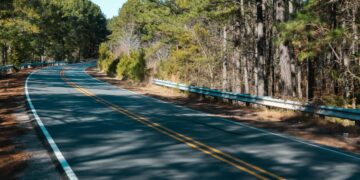Table of Contents
For 15 years, I was the perfect retirement saver.
I was a practitioner of the financial arts, a devout follower of the sacred texts of personal finance.
I had a spreadsheet that was a work of art, a beautiful and complex machine of projections and calculations.
I started saving in my 20s, religiously contributing 15% of my gross pay.1
I dutifully maxed out my 401(k) every year, capturing every last cent of my employer’s match—what the experts rightly call “free money”.2
I knew my “number,” that hallowed figure—somewhere between 70% and 90% of my pre-retirement income—that experts said I’d need to maintain my lifestyle.3
I opened and funded an IRA.4
I diversified my investments according to the accepted wisdom, creating what I believed was a robust, optimized portfolio.5
I did everything right.
And I was consumed by anxiety.
The more I optimized the machine, the more fragile it felt.
Every market fluctuation sent a jolt of fear through me.
The plan wasn’t a source of security; it was a source of constant, low-grade stress.
It was a second job I hadn’t signed up for, one that required me to be a dispassionate, hyper-rational robot—a role I was failing to play.
The entire edifice of my financial future felt brittle, abstract, and utterly disconnected from the rhythms of a real, human life.
This feeling, I’ve learned, is common.
Retirement planning can feel like a bewildering maze, a complex word problem with too many variables and too many people financially benefiting from keeping you confused.6
My crisis of faith came during a particularly sharp market downturn a few years ago.
I remember watching the numbers on the screen turn red, seeing years of diligent saving evaporate in a matter of days.
The conventional advice I had memorized—”steer clear of emotional investing,” “stay the course”—felt like a cruel joke.1
My heart was pounding.
My amygdala, the ancient part of my brain responsible for the fight-or-flight response, was screaming at me to sell, to stop the bleeding, to run from the threat.8
The psychological pain of the loss was overwhelming, a feeling researchers say is often twice as intense as the pleasure of an equivalent gain.9
I came terrifyingly close to panic selling, an act that would have turned temporary, on-paper losses into a real, catastrophic, and permanent destruction of my capital.
I didn’t sell.
But the experience shattered my belief in the purely mechanical model of retirement planning.
That model had provided a blueprint for a machine, but it had given me no operating manual for the emotional human who was supposed to run it.
It failed to account for the most important variable in the entire equation: my own psychology.
It was clear that the standard playbook was incomplete.
It provided rules but no resilience.
It offered optimization but no peace.
To escape the stress, I turned to my garden.
I plunged my hands into the soil, seeking something tangible and real.
And it was there, while learning about a design philosophy called permaculture, that I had my epiphany.
Permaculture isn’t just about gardening; it’s a way of thinking, of “consciously designed landscapes which mimic the patterns and relationships found in nature, while yielding an abundance of food, fibre and energy for provision of local needs”.10
The thought struck me like a bolt of lightning: A retirement portfolio shouldn’t be a brittle machine.
It should be a resilient ecosystem.
It needed to be designed with the same principles that allow a forest or a thriving garden to withstand drought, pests, and storms without collapsing.
It needed to work with human nature, not against it.
This realization didn’t just give me a new set of rules; it gave me a whole new paradigm.
It shifted my primary goal from optimization—the stressful, unending quest to squeeze out the highest possible return—to resilience, the quiet confidence that comes from building a system that can survive and thrive through unpredictable events.
This single shift changed everything.
It was the beginning of the Permaculture Portfolio.
Part I: The Epiphany in the Garden – A New Paradigm for Wealth
The core of permaculture is built on three simple, yet profound, ethics: Earth Care, People Care, and Fair Share.11
These ethics, distilled from cultures that have lived in balance with their environments for centuries, provide a moral compass for design.
As I stood in my garden, I realized they could also provide the foundation for a more humane and sustainable approach to financial planning.
- Earth Care became Care of Capital. In a garden, you care for the earth by building healthy, living soil. You protect it from erosion, enrich it with organic matter, and ensure its long-term fertility. In finance, your capital is your soil. The principle of “Care of Capital” means you must protect and nurture your principal. It’s not just about making it grow; it’s about preserving it from the erosive forces of fees, inflation, and—most importantly—catastrophic mistakes born of fear. Healthy soil is the foundation of a resilient garden; a protected principal is the foundation of a resilient portfolio.13
- People Care became Care of Self. Permaculture insists that any system must care for the people within it. A garden that requires back-breaking labor and constant chemical inputs isn’t sustainable. Likewise, a retirement plan that causes sleepless nights and chronic anxiety is, by this definition, a failed design, no matter how impressive its projected returns. The “Care of Self” principle demands that your financial plan be tailored to your psychological well-being, your true risk tolerance, and your actual life goals. It must reduce anxiety, not create it.15
- Fair Share became Sustainable Yield & Legacy. This ethic is about setting limits on consumption and ensuring resources are distributed equitably. It means taking a “fair share” of the harvest so the system can continue to produce for the future. In retirement, this translates to creating a sustainable “harvest” of income without depleting the underlying capital too quickly. It reframes withdrawals not as a panicked depletion of a finite resource, but as a thoughtful, regular harvest from a living, productive system, ensuring there’s enough for your own later years and for the legacy you wish to leave.10
This new framework was a revelation.
Conventional finance, with its relentless focus on maximizing alpha and beating the market, had pushed me to build a high-performance race car—incredibly powerful, but fragile and terrifying to drive.
Permaculture taught me to build a robust, all-terrain vehicle—one designed not for maximum speed on a perfect track, but for navigating the bumps, storms, and unpredictable terrain of a real life.
It was a shift from a philosophy of extraction to a philosophy of stewardship.
Part II: The 7 Principles of a Permaculture Portfolio
With these ethics as my guide, I began to see how the 12 design principles of permaculture, developed by Bill Mollison and David Holmgren, could be translated into a practical, actionable financial playbook.10
These principles became the tools I used to dismantle my anxiety-inducing machine and cultivate a resilient financial ecosystem.
Here are the seven that transformed my approach.
1. Observe & Interact: Know Your Personal Ecosystem
Before a permaculture designer puts a single plant in the ground, they spend time—weeks, months, even a full year—simply observing.
They watch how the sun moves across the land, where the water flows during a storm, which areas are hit by wind, and what plants and animals already live there.10
Only by deeply understanding the unique patterns of a specific site can you design a system that works with it, rather than fighting against it.
Conventional financial planning often skips this crucial first step.
It hands you a generic blueprint and tells you to start building, regardless of your personal landscape.
The permaculture approach insists you start by observing your own ecosystem.
The external market is a powerful force, but your internal landscape—your habits, your psychology, your goals—is an equally critical and far more controllable part of the system.
Failure to understand your internal landscape is the primary reason people abandon their external plans during times of stress.
Actionable Steps:
- Observe Your Financial Flows: This is more profound than just making a budget. A budget is often an aspirational document, a list of what you think you should spend. Observing is about seeing what you actually do. For a few months, track your spending without judgment. Collect your bank and credit card statements and categorize your expenses.19 Where does your money naturally flow? Like water on a landscape, it will reveal the true contours of your financial life. This provides a realistic, not idealized, foundation to build upon.
- Interact with Your Psychology: This is the most overlooked part of financial planning. You must become a student of your own mind. The field of behavioral finance has identified a host of cognitive biases—the “pests” in our mental garden—that consistently lead to poor decisions.15 Are you prone to
Loss Aversion, where the fear of losing money is so powerful it causes you to sell at the worst possible time?.8 Do you fall victim to
Herd Mentality and the Fear of Missing Out (FOMO), buying into assets at the peak of a bubble because everyone else is?.9 Do you suffer from
Recency Bias, believing that whatever has happened in the market recently will continue forever?.21 Be honest. Acknowledging your inherent biases is like identifying the pests and diseases common to your region; it’s the first step toward managing them. - Define Your True “Yield”: The standard model tells you to save for “retirement.” But what does that word actually mean to you? A permaculture system is always designed to obtain a specific yield—tomatoes, eggs, shade, beauty.10 What is the yield you are designing for? Is it the freedom to travel, the ability to become a full-time grandparent, the resources to launch a passion project, or simply the peace of mind that comes with security?.1 Get specific. Write it down. The traditional vision of retirement is often outdated and rigid, designed for a world of linear careers and shorter lifespans that no longer exists for many of us.22 When you define your personal “why,” the abstract goal of saving a giant pile of money transforms into the tangible goal of funding a life you’re excited to live.
2. Catch & Store Energy: Building Your Financial Watershed
In any resilient natural system, nothing is more crucial than capturing and storing energy when it is abundant.
A smart gardener doesn’t let rainfall just run off the land; they build rich soil that acts like a sponge, and they direct the overflow into rain barrels and cisterns to be used during dry spells.10
Your income is your financial rainfall.
Your job is to create an efficient watershed to capture that energy and store it in reservoirs where it can be protected and grow.
The financial industry presents accounts like 401(k)s and IRAs as “products.” The Permaculture Portfolio sees them as essential infrastructure—the tanks and ponds of your financial watershed.
This reframes your relationship with them from that of a passive consumer to an active designer.
Actionable Steps:
- The 401(k) as Your Primary Rain Barrel: If your employer offers a retirement plan like a 401(k), 403(b), or 457(b), this is your most important energy-capture device.25 Its power lies in its automation. Contributions are automatically deducted from your paycheck, a design that leverages our natural inertia to ensure we save consistently.26 You can typically choose between a
Traditional 401(k), where you contribute pre-tax dollars (lowering your taxable income today) and pay taxes on withdrawals in retirement, or a Roth 401(k), where you contribute after-tax dollars and your qualified withdrawals in retirement are tax-free.25 The money is then invested in a menu of options, usually mutual funds, where it has the potential to grow. - The Employer Match: Capturing “Free Rain”: Many employers offer to match your contributions up to a certain percentage of your salary.28 This is the financial equivalent of free, clean rainwater falling from the sky. It is the highest, guaranteed return on investment you will ever find. For example, a company might match 50% of the first 6% you contribute. If you earn $60,000 and contribute 6% ($3,600), they add $1,800 to your account.25 Failing to contribute enough to get the full match is like letting a massive rain barrel overflow and evaporate. It is the single biggest leak you can have in your system.7
- The IRA as a Secondary Cistern: An Individual Retirement Arrangement (IRA) is a personal retirement account you open on your own, independent of your employer.4 It’s a vital secondary reservoir. If you don’t have a workplace plan, an IRA is your primary savings vehicle. If you do, it’s a powerful supplement. Like 401(k)s, they come in Traditional (tax-deductible contributions) and Roth (tax-free withdrawals in retirement) varieties.30 IRAs often offer a much wider range of investment choices than a typical 401(k), giving you more control over how your money is invested.29
- Compounding: The Living Soil: Capturing the water is only the first step. The magic happens when that water is stored in deep, rich, living soil where it can nourish life. In finance, this living soil is the power of compounding. When your investments earn returns, those returns then start earning their own returns, creating a snowball effect over time.26 The earlier you start building your soil—by starting to save—the more time this incredible force of nature has to work for you. A worker who starts saving at age 25 might only need to save 8.8% of their income annually to retire comfortably, whereas someone who waits until 35 may need to save 16.6% to reach the same goal.19 Time is the most valuable nutrient for your financial soil.
3. Use & Value Diversity: Designing a Polyculture Portfolio
Walk through a modern industrial farm, and you’ll see a monoculture: endless rows of a single crop.
This system is incredibly efficient in a stable environment, but it’s also extraordinarily fragile.
A single pest, a specific disease, or a particular drought can wipe out the entire harvest.31
Now, walk through a thriving natural forest or a well-designed permaculture garden.
You’ll see a polyculture: a complex, interwoven community of different plants.
Tall fruit trees provide shade for smaller shrubs, nitrogen-fixing ground cover enriches the soil for heavy-feeding vegetables, and aromatic herbs repel pests that might attack their neighbors.32
This diversity is what creates resilience.
If one plant fails, the system as a whole survives and thrives.
Your investment portfolio should be a polyculture, not a monoculture.
This principle of diversification is the closest thing to a free lunch in finance.34
The reason it works is a concept called
correlation.
In financial terms, correlation measures how two assets move in relation to each other.35
If they have a high positive correlation (close to +1), they tend to move in lockstep.
If they have a negative correlation (close to -1), they tend to move in opposite directions.
The goal of diversification is to build a portfolio of assets with low or negative correlations, so that when one part of your garden is struggling, another part is thriving, smoothing out your overall returns and protecting you from catastrophic loss.37
This is the financial equivalent of companion planting, a practice where gardeners place specific plants together for their mutual benefit.39
Just as marigolds release a chemical that repels insects harmful to tomatoes, bonds can provide stability when the stock market is being attacked by the “pests” of a recession.39
Actionable Steps:
- Design Your Plant Guilds (Asset Allocation): Move beyond simplistic rules like “100 minus your age”.41 Instead, think of asset classes as different “plant guilds” that perform unique functions in your garden ecosystem.
- Stocks (Fruit Trees): These are your portfolio’s heavy hitters, the tall trees reaching for the sun. They offer the greatest potential for long-term growth but also come with the most volatility (risk). They hit home runs, but they also strike out.42 This includes U.S. stocks (large, mid, and small-cap) and international stocks.
- Bonds (Nitrogen-Fixing Ground Cover): Bonds are your soil-builders. They are generally more stable and less volatile than stocks, providing a steadying influence on your portfolio. They won’t produce spectacular growth, but they protect the soil and provide stability during market storms.42
- Real Estate (Perennial Shrubs): Investments in real estate, often through Real Estate Investment Trusts (REITs), can provide both income and growth, acting like sturdy, productive shrubs in your garden.43
- Commodities & Alternatives (Medicinal Herbs): Assets like gold, oil, or other commodities can act as a hedge against inflation and often have a low correlation to stocks and bonds. They are the specialized plants that thrive in specific conditions and can be used to treat particular portfolio ailments.43
- Use the Companion Planting Matrix: To make this tangible, we can use historical data to create a guide. The table below shows the correlation between major asset classes over a significant period. Think of it as a guide to which “plants” get along well together. A low or negative number means they are good companions; a high positive number means they compete for the same resources and are vulnerable to the same threats.
The Asset Class Companion Planting Matrix (Correlation Guide)
Based on historical annual returns from Jan 2008 – Jun 2024.
A value of 1.00 indicates perfect positive correlation (moves in lockstep), while a value of -1.00 indicates perfect negative correlation (moves in opposite directions).
A value near 0.00 indicates no relationship.
| Asset Class (Ticker) | US Large Cap Stocks (IVV) | US Small Cap Stocks (IJR) | International Stocks (EFA) | Emerging Mkt Stocks (EEM) | US Aggregate Bonds (AGG) | Gold (GLD) | Real Estate (VNQ) |
| US Large Cap Stocks (IVV) | 1.00 | 0.88 | 0.87 | 0.76 | 0.25 | 0.07 | 0.75 |
| US Small Cap Stocks (IJR) | 0.88 | 1.00 | 0.77 | 0.69 | 0.18 | -0.01 | 0.75 |
| International Stocks (EFA) | 0.87 | 0.77 | 1.00 | 0.87 | 0.33 | 0.16 | 0.73 |
| Emerging Mkt Stocks (EEM) | 0.76 | 0.69 | 0.87 | 1.00 | 0.29 | 0.28 | 0.64 |
| US Aggregate Bonds (AGG) | 0.25 | 0.18 | 0.33 | 0.29 | 1.00 | 0.37 | 0.44 |
| Gold (GLD) | 0.07 | -0.01 | 0.16 | 0.28 | 0.37 | 1.00 | 0.12 |
| Real Estate (VNQ) | 0.75 | 0.75 | 0.73 | 0.64 | 0.44 | 0.12 | 1.00 |
Source: Adapted from Portfolio Visualizer asset class correlation data.45
As the matrix shows, US Stocks and International Stocks are highly correlated (0.87), meaning they tend to move together.
They are not good “companions” for diversification against each other.
However, US Stocks and Gold have a very low correlation (0.07).
This makes them excellent companions; when stocks are struggling, gold often behaves differently, providing balance to the ecosystem.
The goal is to build a portfolio with a mix of these relationships, creating a resilient whole that is stronger than the sum of its parts.46
4. Produce No Waste: Plugging Financial Leaks
In a permaculture system, there is no such thing as waste.
Every output from one element becomes an input for another.
Chicken droppings aren’t waste; they are nitrogen-rich fertilizer for the garden.
Fallen leaves aren’t debris; they are mulch that protects the soil and feeds earthworms.
The system is a closed loop, designed for maximum efficiency.10
In personal finance, however, waste is a pure loss.
It is energy that leaks out of your system, never to return.
Investors are often fixated on the dramatic risk of a market crash—a “flash flood”—while completely ignoring the slow, constant “drip” of leaks that can erode just as much, if not more, of their wealth over time.
A resilient portfolio must be designed to plug these leaks and produce no waste.
Actionable Steps:
- The Slow Drip of Fees: This is the most insidious leak in any financial plan. Investment fees are the silent killers of growth.48 They may seem small—a mere 1% or 2%—but their effect is compounded over time, creating a devastating drag on your returns. You don’t just lose the fee itself; you lose all the future growth that fee could have generated.
Let’s look at a hypothetical $100,000 investment earning a 6% annual return over 30 years.
- With a 0.25% annual fee, your portfolio grows to approximately $519,000.
- With a 1.0% annual fee, it grows to approximately $432,000.
- With a 2.0% annual fee, it grows to only $324,000.
That seemingly tiny 1.75% difference in fees costs you nearly $200,000.
It’s a staggering amount of waste.
The solution is to be vigilant.
Favor low-cost investment vehicles like index funds and Exchange-Traded Funds (ETFs), which often have expense ratios below 0.1%, compared to actively managed funds that can charge 1% or more.49
Always check the expense ratio, advisory fees, and transaction fees before investing.51
- The Inefficiency of Taxes: Taxes are a necessary part of life, but paying more than you owe due to poor planning is another form of waste. Using tax-advantaged accounts like 401(k)s and IRAs is the first line of defense. Understanding the tax treatment of different accounts (e.g., Traditional vs. Roth) and planning for tax-efficient withdrawals in retirement can save you tens of thousands of dollars over the long run.52
- The Flash Flood of Panic Selling: This is the ultimate act of producing waste. In a moment of fear, you can destroy decades of stored energy. When you panic sell during a market downturn, you take temporary, on-paper losses and make them permanent, real losses of capital.8 You have effectively taken years of captured sunlight and water and flushed it out of your system. History shows that market downturns are almost always followed by recoveries. Investors who flee the market not only lock in their losses but also miss the powerful rebound that follows.55 This single act of waste can be more destructive than years of high fees.
5. Apply Self-Regulation & Accept Feedback: Integrated Pest Management for Your Mind
A wise gardener knows they will never eliminate every pest from their garden.
Attempting to do so would require constant, toxic chemical warfare that would ultimately harm the entire ecosystem.
Instead, a permaculture gardener uses Integrated Pest Management.
They design a system that keeps pests in check naturally by encouraging predators (like ladybugs to eat aphids), using physical barriers, and planting a diverse range of crops so no single pest can dominate.32
The system is designed to be self-regulating.
In your financial garden, the most dangerous pests are not in the market; they are in your mind.
As we saw in Principle 1, cognitive biases are hardwired into our brains.
We cannot eliminate them through sheer willpower.
Instead, we must design a financial system with built-in “pest management” that regulates their impact and protects us from our own worst instincts.
In this analogy, market volatility is the “feedback” from the environment.
A self-regulating system accepts this feedback without panicking, using it to make disciplined adjustments rather than emotional reactions.
The goal is to build a system with guardrails that make it easy to do the right thing and hard to do the wrong thing, especially when you are feeling emotional.
Actionable Steps:
- Automate Your Planting (Dollar-Cost Averaging): The single best way to combat the emotional pests of market timing, FOMO, and fear is Dollar-Cost Averaging (DCA). This is the practice of investing a fixed amount of money at regular intervals, regardless of what the market is doing.57 If you contribute to a 401(k) from every paycheck, you are already practicing DCA.59 This simple, automated strategy is profoundly powerful. When prices are high, your fixed dollar amount buys fewer shares. When prices are low, that same amount buys
more shares. Over time, this automatically lowers your average cost per share and ensures you are buying when others are fearful.60 It is a built-in mechanism for buying low, and it removes the impossible burden of trying to predict the market’s next move. - Automate Your Weeding and Pruning (Disciplined Rebalancing): Over time, the natural cycles of the market will cause your portfolio to drift away from its target allocation. Your “fruit trees” (stocks) might grow much faster than your “ground cover” (bonds), leaving your portfolio with more risk than you intended. Rebalancing is the disciplined process of periodically selling some of the assets that have grown and using the proceeds to buy more of the assets that have shrunk, bringing your portfolio back to its target allocation.61 This is a built-in, unemotional system for “buy low, sell high.” It forces you to trim your winners (sell high) and nourish your underperformers (buy low), which is the exact opposite of what our emotional biases tell us to do.62 Whether you rebalance on a schedule (e.g., once a year) or when your allocations drift by a certain percentage (e.g., 5%), it is a critical self-regulating mechanism that maintains the intended design of your ecosystem.
These two strategies—DCA and rebalancing—are not just investing techniques.
They are behavioral technologies.
They are the pre-commitment devices that automate discipline, effectively protecting your rational, long-term self from your emotional, short-term self during market storms.
6. Use & Value Renewable Resources: Designing a Sustainable Harvest
A sustainable farm is one that can produce a yield year after year without depleting the soil.
The farmer understands that they can’t just harvest the entire crop and leave the ground bare.
They must leave some behind, rotate crops, and add nutrients back to maintain the system’s long-term health.
The mindset required for a sustainable harvest is fundamentally different from the mindset of pure growth.
Most financial planning focuses obsessively on the accumulation phase—the “growing season.” But it often leaves people completely unprepared for the complex new ecosystem of the distribution phase—the “harvest season” of retirement itself.
This is where many of the most damaging mistakes are made.52
The principle of “Use & Value Renewable Resources” forces us to design a portfolio that can provide a sustainable harvest for decades without exhausting the soil.
Actionable Steps:
- Cultivate Your “Perennial” Income Streams: In a garden, perennials are the reliable plants that come back year after year with minimal effort. In retirement, your perennial income streams are your most reliable sources of cash flow. These include Social Security and any traditional pensions. The decision of when to claim Social Security is one of the most critical you will make. While you can claim as early as age 62, your benefit will be permanently reduced. By waiting until your full retirement age (typically 66 or 67) or even until age 70, your monthly payment can be significantly higher.5 These guaranteed income sources form the bedrock of your retirement harvest.
- Design a Flexible “Harvest” (Withdrawal Strategy): For decades, the “4% rule” was the standard advice: withdraw 4% of your portfolio in the first year of retirement, and adjust that amount for inflation each year thereafter. However, in today’s world of longer lifespans and potentially lower future returns, many experts now consider this rule outdated and risky.23 A more resilient approach is a
dynamic withdrawal strategy. This might mean taking a smaller percentage in years when the market is down and a slightly larger one in years when the market is up. It requires flexibility and a willingness to adjust your spending to match the “weather conditions” of the market. - Plan for a Long Season (Longevity & Inflation): People are living longer than ever before. A 65-year-old couple today has a 50% chance that at least one of them will live past age 92.65 Your plan must account for a retirement that could last 25 or 30 years.7 This means planning for the quiet but powerful erosion of
inflation. Even at a modest 2.5% inflation rate, the purchasing power of your money will be cut nearly in half over 25 years.65 Your “harvest” must be sufficient to cover not just your needs today, but your more expensive needs in the future, especially rising healthcare costs.52
7. Design from Patterns to Details: Cultivating Your Long-Term Vision
The final principle of permaculture design brings the entire process full circle.
A good designer never starts by asking, “Where should I plant this carrot?” They start by observing the grand patterns of the landscape: sun, wind, water, slope.10
Only after understanding the overarching pattern do they move to the details—placing the carrot in the specific spot where it will thrive.
In your financial life, the “pattern” is your overarching vision, your values, your definition of a life well-lived.
The “details” are the specific funds you choose, the accounts you open, and the percentages you allocate.
This principle is the ultimate resolution to the anxiety that started my journey.
The stress of conventional planning comes from forcing your life to serve the abstract details of a spreadsheet.
The peace of the permaculture portfolio comes from designing a financial system where every detail is in service to the beautiful, unique pattern of your life.
Actionable Steps:
- Start with the Big Pattern: Revisit your answers from Principle 1. What is the “why” behind your plan? What kind of life are you trying to fund? What legacy do you want to leave? This is your North Star. Every decision must be oriented toward it.
- Connect the Details to the Pattern: Now, you can see how the details fit. Your choice between a Roth or Traditional IRA isn’t just a tax decision; it’s a strategic choice based on the pattern of your expected income now versus in retirement.1 Your selection of a specific low-cost index fund isn’t just about minimizing fees; it’s about maximizing the energy that stays in your system to fuel your life’s pattern.49 Setting up automatic investments isn’t just a convenience; it’s a detailed design choice that supports the pattern of disciplined, unemotional saving.26
- Cultivate a Living Design: A permaculture garden is never “finished.” It is a living, evolving system that adapts to changing seasons and conditions. Your financial plan must also be a living document. Life is not static. You may get married, have children, change careers, or inherit money. These are shifts in the pattern of your life, and they require you to revisit and adapt the details of your financial design.2 A regular review—at least once a year or after any major life event—ensures your financial ecosystem remains aligned with the landscape of your life.
Conclusion: Your Resilient Harvest
My journey from the tyranny of the spreadsheet to the wisdom of the garden was more than a change in strategy; it was a fundamental paradigm shift.
I moved from a world of mechanical optimization to one of ecological resilience.
I stopped trying to be a perfect, emotionless robot and started learning to be a thoughtful, observant gardener.
The result? The anxiety is gone.
When the market dipped again a few years after my epiphany, I felt no panic.
I didn’t rush to my computer to check my balances.
I knew my ecosystem was designed for this.
My diverse “polyculture” of assets was acting as it should, with some parts holding steady while others struggled.
My automated “pest management” systems—my regular contributions and rebalancing rules—were operating without my emotional interference.
I had confidence not in my ability to predict the future, but in the resilience of the system I had cultivated.
I had a plan that served my life, not a life that served a plan.
Building a secure and peaceful financial future is not about becoming a Wall Street genius or mastering impossibly complex financial instruments.
It is about applying timeless principles of stewardship and design to your own resources.
It is about understanding that you are not managing a machine, but cultivating a garden.
Observe your unique landscape.
Create systems to catch and store energy.
Embrace the strength that comes from diversity.
Be ruthlessly efficient and produce no waste.
Design systems that protect you from your own worst instincts.
Plan for a sustainable harvest.
And never forget that the entire design exists for one reason: to support the beautiful, overarching pattern of the life you want to live.
With patience, observation, and care, you have everything you need to cultivate a truly resilient and abundant future.
Works cited
- 7 top retirement tips: Retirement advice for every age – Ameriprise Financial, accessed on July 27, 2025, https://www.ameriprise.com/financial-goals-priorities/retirement/7-top-retirement-tips
- Retirement Planning: Early Steps to Take for A Comfortable Future | Hickory Point Bank, accessed on July 27, 2025, https://www.hickorypointbank.com/retirement-planning-early-steps-to-take-for-a-comfortable-future/
- Top 10 Ways to Prepare for Retirement – U.S. Department of Labor, accessed on July 27, 2025, https://www.dol.gov/sites/dolgov/files/ebsa/about-ebsa/our-activities/resource-center/publications/dol-top-10-ways-to-prepare-for-retirement-booklet-2023.pdf
- Topic no. 451, Individual retirement arrangements (IRAs) | Internal Revenue Service, accessed on July 27, 2025, https://www.irs.gov/taxtopics/tc451
- How to plan for retirement | Vanguard, accessed on July 27, 2025, https://investor.vanguard.com/investor-resources-education/retirement/planning
- Retirement seems so complicated! : r/personalfinance, accessed on July 27, 2025, https://www.reddit.com/r/personalfinance/comments/1m6sacy/retirement_seems_so_complicated/
- 5 Retirement Planning Mistakes to Avoid – Wells Fargo, accessed on July 27, 2025, https://www.wellsfargo.com/financial-education/retirement/avoid-mistakes/
- The psychology behind panic selling | Wealthify.com, accessed on July 27, 2025, https://www.wealthify.com/blog/the-psychology-behind-panic-selling
- The Psychology of Market Cycles: Why Investors Buy High and Sell Low, accessed on July 27, 2025, https://towerpointwealth.com/the-psychology-of-market-cycles/
- How the 12 Principles of Permaculture can transform your garden (and our world), accessed on July 27, 2025, https://green-connect.com.au/heres-your-guide-to-the-12-principles-of-permaculture/
- Permaculture Principles by David Holmgren, accessed on July 27, 2025, https://worldpermacultureassociation.com/holmgren-principles/
- Permaculture Ethics – Earth Care • People Care • Fair Share, accessed on July 27, 2025, https://permacultureprinciples.com/ethics/
- Soil Health – Natural Resources Conservation Service – USDA, accessed on July 27, 2025, https://www.nrcs.usda.gov/conservation-basics/natural-resource-concerns/soils/soil-health
- Soil – Landscape For Life – Colorado State University, accessed on July 27, 2025, https://landscapeforlife.colostate.edu/soil/
- Behavioral Finance: 16 Easy Ways to Outsmart Your Brain for More Wealth and Security, accessed on July 27, 2025, https://www.boldin.com/retirement/behavioral-finance-outsmart-your-brain/
- Untangling Behavioral Finance and the Psychology of Financial Planning, accessed on July 27, 2025, https://www.financialplanningassociation.org/learning/publications/journal/JAN23-untangling-behavioral-finance-and-psychology-financial-planning-OPEN
- Permaculture Principles: A Cornucopia, accessed on July 27, 2025, https://www.freepermaculture.com/principles/
- Climate-Resilient Gardens – Critical Concrete, accessed on July 27, 2025, https://criticalconcrete.com/climate-resilient-gardens/
- Retirement Planning: How to Prepare for Retirement – Annuity.org, accessed on July 27, 2025, https://www.annuity.org/retirement/planning/
- The Role of Behavioral Finance in Retirement Plan Participation – PlanPILOT, accessed on July 27, 2025, https://planpilot.com/role-of-behavioral-finance-in-retirement-plan-participation/
- Why Is Behavioral Finance Important for Financial Planning?, accessed on July 27, 2025, https://onlinecbm.uis.edu/degrees/business/masters/finance/behavioral-finance-for-financial-planning/
- Traditional Retirement Is Outdated: Why It’s Time for Life After Work – Burton Enright Welch, accessed on July 27, 2025, https://bewinvest.com/insights/traditional-retirement-is-outdated-why-its-time-for-life-after-work/
- Why Traditional Retirement Strategies May Not Work Today – John Stevenson, accessed on July 27, 2025, https://johnstevenson.com/traditional-retirement-strategies-today/
- 10 Ways to Conserve Water in the Garden – Fine Gardening, accessed on July 27, 2025, https://www.finegardening.com/project-guides/gardening-basics/10-ways-to-conserve-water-in-the-garden
- How does a 401(k) plan work? | Ameriprise Financial, accessed on July 27, 2025, https://www.ameriprise.com/financial-goals-priorities/retirement/what-is-a-401k
- What’s a 401(k)? – Fidelity Investments, accessed on July 27, 2025, https://www.fidelity.com/learning-center/smart-money/what-is-a-401k
- What is a 401(k) plan and how does it work? – Human Interest, accessed on July 27, 2025, https://humaninterest.com/learn/articles/what-is-a-401k-how-does-it-work/
- What is a 401(k)? | PensionBee (US), accessed on July 27, 2025, https://www.pensionbee.com/us/retirement-explained/types-of-retirement-accounts/what-is-a-401k
- Individual Retirement Accounts (IRAs): Types & Advantages, accessed on July 27, 2025, https://www.guardianlife.com/ira
- www.guardianlife.com, accessed on July 27, 2025, https://www.guardianlife.com/ira#:~:text=IRAs%20are%20tax%2Dadvantaged%20retirement,IRA%20savings%20or%20investment%20accounts.
- 5 Fabulous Reasons to Grow a Diverse Garden, accessed on July 27, 2025, https://ngb.org/5-reasons-to-grow-a-diverse-garden/
- Building A Resilient Garden – Good Magazine, accessed on July 27, 2025, https://goodmagazine.co.nz/building-a-resilient-garden/
- The importance of biodiversity in the organic garden (and how it fights climate change), accessed on July 27, 2025, https://www.ecofriendlyhomestead.com/sustainable-garden/learn/a-more-biodiverse-garden-combats-climate-change
- How Important Is Diversification? Creating a Resilient Investment Portfolio – Discovery Alert, accessed on July 27, 2025, https://discoveryalert.com.au/news/diversification-investing-strategies-risk-returns-2025/
- Understanding Asset Class Correlations – Paradigm Life, accessed on July 27, 2025, https://paradigmlife.net/understanding-asset-correlation/
- Correlation: What It Means in Finance and the Formula for Calculating It – Investopedia, accessed on July 27, 2025, https://www.investopedia.com/terms/c/correlation.asp
- Building resilient portfolios: The power of diversification – Russell Investments, accessed on July 27, 2025, https://russellinvestments.com/us/blog/diversification-a-potential-cure-for-emotional-investor-behavior
- Asset Class Correlation Map – Guggenheim Investments, accessed on July 27, 2025, https://www.guggenheiminvestments.com/advisor-resources/interactive-tools/asset-class-correlation-map
- en.wikipedia.org, accessed on July 27, 2025, https://en.wikipedia.org/wiki/Companion_planting
- Companion Planting Guide for Your Garden – Burpee Seeds, accessed on July 27, 2025, https://www.burpee.com/blog/companion-planting-guide.html
- 6 Asset Allocation Strategies That Work – Investopedia, accessed on July 27, 2025, https://www.investopedia.com/investing/6-asset-allocation-strategies-work/
- Beginners’ Guide to Asset Allocation, Diversification, and Rebalancing | Investor.gov, accessed on July 27, 2025, https://www.investor.gov/additional-resources/general-resources/publications-research/info-sheets/beginners-guide-asset
- Building Resilience: 5 Ways to Diversify Your Small Business’s Investment Strategy | Citizens Bank | Elizabethton, TN, accessed on July 27, 2025, https://www.citizensbank24.com/blog/building-resilience-5-ways-to-diversify-your-small-businesss-investment-strategy
- How diversification builds resilience in banking – Lending Club, accessed on July 27, 2025, https://www.lendingclub.com/resource-center/institutional-investing/how-diversification-builds-resilience-in-banking
- Asset Class Correlations – Portfolio Visualizer, accessed on July 27, 2025, https://www.portfoliovisualizer.com/asset-class-correlations
- Increasing Soil Biodiversity in Botanical Gardens | Land-Grant Press – Clemson University, accessed on July 27, 2025, https://lgpress.clemson.edu/publication/increasing-soil-biodiversity-in-botanical-gardens/
- Bring Biodiversity and Its Benefits to Your Garden! – Conserving Carolina, accessed on July 27, 2025, https://conservingcarolina.org/bring-biodiversity-and-its-benefits-to-your-garden/
- What is the true impact of hidden fees on investment returns? – Saxo Bank, accessed on July 27, 2025, https://www.home.saxo/learn/guides/pricing/what-is-the-true-impact-of-hidden-fees-on-investment-returns
- Investment fees: Why they are critical for your long-term wealth – Saxo Bank, accessed on July 27, 2025, https://www.home.saxo/learn/guides/financial-literacy/investment-fees-why-they-are-critical-for-your-long-term-wealth
- The Truth About Investment Fees — Black Mammoth: Modern Family Office, accessed on July 27, 2025, https://www.blackmammoth.com/blog/truth-about-investment-fees
- How Fees and Expenses Affect Your Investment Portfolio – Investor Bulletin, accessed on July 27, 2025, https://www.investor.gov/introduction-investing/general-resources/news-alerts/alerts-bulletins/investor-bulletins/updated
- Top 5 Retirement Planning Mistakes Professionals Make | Minster Bank, accessed on July 27, 2025, https://www.minsterbank.com/resources/learn/blog/retirement/5-retirement-planning-mistakes/
- Critical Pitfalls to Avoid in Retirement Planning – LifeFone, accessed on July 27, 2025, https://www.lifefone.com/articles/critical-pitfalls-to-avoid-in-retirement-planning
- Retirement Income Planning Mistakes – New York Life Insurance, accessed on July 27, 2025, https://www.newyorklife.com/articles/retirement-blind-spots
- The History and Psychology of Panic-Selling – Lazard, accessed on July 27, 2025, https://www.lazard.com/research-insights/the-history-and-psychology-of-panic-selling/
- Creating a Resilient Garden | 10 Key Principles | joe gardener®, accessed on July 27, 2025, https://joegardener.com/podcast/how-to-create-resilient-garden/
- Dollar-Cost Averaging (DCA) Explained With Examples and, accessed on July 27, 2025, https://www.investopedia.com/terms/d/dollarcostaveraging.asp
- What Is Dollar-Cost Averaging? Guide for Investors – Merrill Lynch, accessed on July 27, 2025, https://www.ml.com/articles/what-is-dollar-cost-averaging.html
- Dollar cost averaging | Fidelity, accessed on July 27, 2025, https://www.fidelity.com/learning-center/trading-investing/dollar-cost-averaging
- What Is Dollar-Cost Averaging? | Charles Schwab, accessed on July 27, 2025, https://www.schwab.com/learn/story/what-is-dollar-cost-averaging
- Rebalancing in Action | Charles Schwab, accessed on July 27, 2025, https://www.schwab.com/learn/story/rebalancing-action
- smartasset.com, accessed on July 27, 2025, https://smartasset.com/investing/benefits-of-rebalancing-portfolio#:~:text=The%20benefits%20of%20rebalancing%20include,and%20supports%20your%20financial%20journey.
- The 10 Most Common Retirement Mistakes – Raymond James, accessed on July 27, 2025, https://www.raymondjames.com/spanosgroup/retirement-wisdom-blog/2024/03/08/the-10-most-common-retirement-mistakes
- Top Ten Financial Mistakes After Retirement, accessed on July 27, 2025, https://ofi.la.gov/ofi-docs/SECTopTenFinancialMistakesAfterRetirement.pdf
- Investing in Retirement: 5 Tips for Managing Your Portfolio – Merrill Lynch, accessed on July 27, 2025, https://www.ml.com/articles/investing-in-retirement.html






